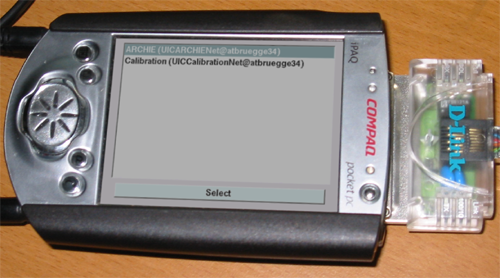Personalized Ubiquitous Computing with Handhelds in an Ad-Hoc Service Environment
Systementwicklungsprojekt (SEP)
Aufgabensteller:
Prof. Bernd Brügge?
Betreuer:
Asa MacWilliams
Documentation and Presentation slides
Overview
DWARF helps developers to build context-aware Augmented Reality applications. One aspect of context is
personalisation of the application for an specific user. Since DWARF applications are formed by chains of interdependent services, you can personalize an application by configuring or reconfiguring a service at runtime or by providing a set of specialized services who the user can select:
Configuration of services
Service can be configured at runtime by using a defined
configuration interface. We have to distinguish between configuration data which are provided by the system itsself (e.g. pre-defined default values or system-specific hardware settings) and the configuration which is loaded into the application by the user.
System configuration is provided by the
Configuration service whereas the user has his/her own
Preferences service running e.g on his/her wearable computer. This information can be used to automatically form or reform the service chains by the DWARF middleware.
Personalized selection of service
The above described method however is not suitable for all situations. In cases where the automated method described above is not possible (because of a lack of information for example), decisions have to be made by the user who must acquaint them to the system. All possible services which can be used for the desired task must be offered to the user via a GUI where he/she can select them. Once the decision is made, the middleware can form the service chains and set up the application.
The Selector service
The
Selector collects all possible services and presents them for the user via a menu service, currently the Qt based
MenuDisplay service. This service is very generic which enables the application developer to use the DWARF
service description to set up the need for a
Selector.
ARCHIE
The
Selector was first used in the ARCHIE system for selecting the desired use case (modeling or HMD calibration, see picture).
My work
- Set up the infrastructure for using a Compaq iPaq with DWARF.
- Set up the iPaq for the SHEEP demo.
- Implemented the
Selector for the ARCHIE demo
--
FranzStrasser - 28 Aug 2003
- Selecting the application use case in ARCHIE:


